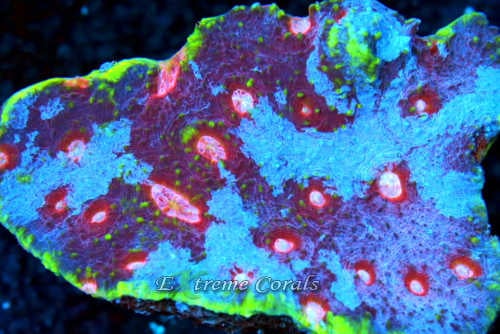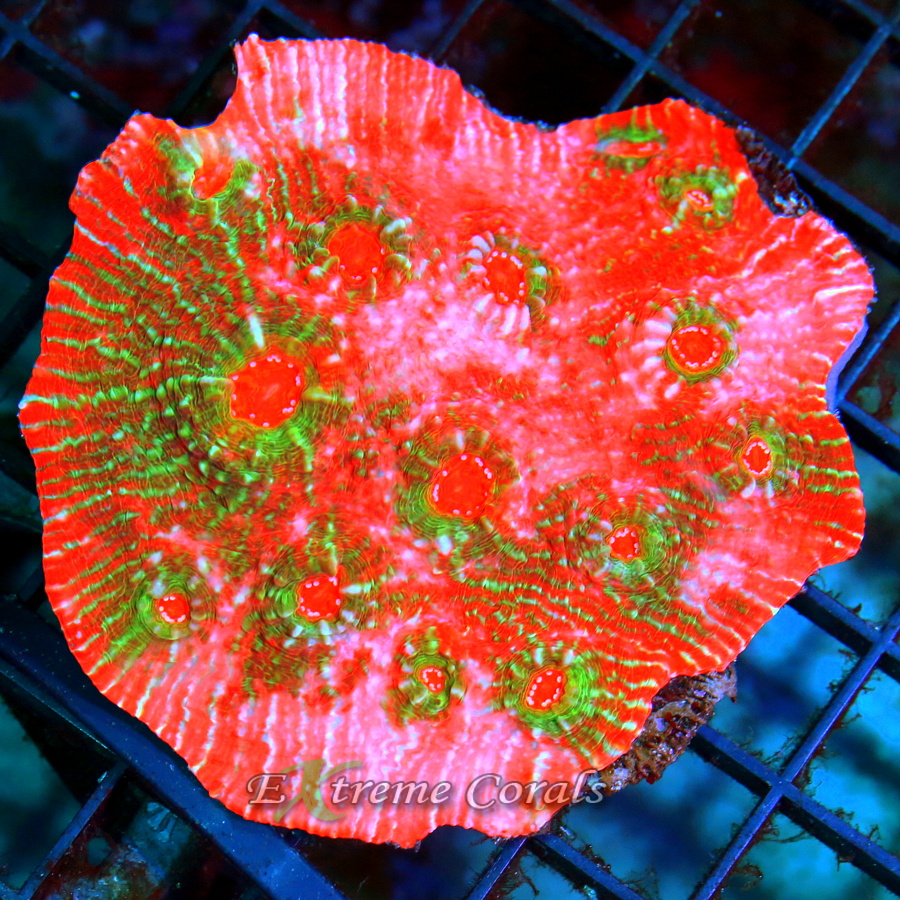Extreme Corals News and Updates
Top Tips for Ensuring the Health and Vibrancy of Your Chalice Coral
Unveiling the Beauty: Essential Insights for Chalice Coral Enthusiasts
Delve into the world of chalice corals with our comprehensive guide, offering expert advice on care, tank setup, ideal conditions, and common health concerns. Elevate your coral-keeping skills and ensure the vibrancy of your reef ecosystem
by scott Shiles • April 29, 2024
Introduction to Chalice Coral

Chalice corals, known for their colorful and intricate shapes, are a popular choice among reef tank enthusiasts. They are a type of large stony coral that adds beauty and diversity to your coral reef ecosystem. Chalice corals come in a variety of stunning colors and patterns, making them a captivating addition to any aquarium. Understanding the basic care requirements and habitat preferences of chalice corals is essential for maintaining their health and vibrancy in your tank.
Understanding the Care Requirements of Chalice Coral
Chalice corals need stable water quality, moderate to high lighting, and slow water flow in your aquarium. Place them in lower parts of the tank to prevent excessive light exposure. Regularly test water parameters and maintain proper calcium levels to keep your chalice coral healthy and vibrant. Feed them mysis shrimp or similar foods to supplement their nutrition. Acclimate new chalice corals slowly to prevent stress.
Choosing the Right Tank Setup for Chalice Coral
Chalice corals require stable and well-maintained tank conditions to thrive. When setting up a tank for chalice coral, consider these factors:
Choose a tank size of at least 20 gallons for one chalice coral, bigger for multiple corals.
Provide strong and consistent lighting to support coral health.
Maintain stable water parameters, including temperature, salinity, and pH levels.
Use a high-quality protein skimmer to keep water clean and clear.
Ensure good water flow within the tank to prevent debris buildup.
Place the chalice coral in a stable and secure location within the tank to prevent accidental damage.
Regularly monitor and test water parameters to ensure optimal conditions for the coral.
Ideal Water Parameters for Chalice Coral
Chalice corals prefer stable water conditions to thrive. Here are the ideal water parameters for their health:
Water Temperature: Keep it between 75-80°F
pH Levels: Maintain it around 8.1-8.4
Salinity: Aim for a specific gravity of 1.024-1.026
Alkalinity: Maintain levels between 8-12 dKH
Calcium Levels: Keep it around 400-450 ppm
Remember, these parameters can help your chalice coral stay healthy and vibrant in your aquarium.
Lighting Needs for Chalice Coral
Chalice corals need moderate to high lighting to thrive. Ensure they receive the right amount of light to promote their growth and vibrant colors. Place them in a well-lit area in your tank, preferably under LED lights or T5 fluorescent lights. Monitor the intensity and duration of the light to prevent bleaching or burning of the coral. Proper lighting is crucial for the health and vibrancy of your chalice coral.
Feeding Chalice Coral - Best Practices
Chalice corals are typically carnivorous and will benefit from a combination of meaty foods like mysis shrimp, brine shrimp, and plankton. It is essential to feed them 2-3 times a week to maintain their health and vibrancy. Target feeding can ensure that the coral directly receives the food instead of it being lost in the water flow. Avoid overfeeding to prevent water quality issues in your aquarium. Observing your corals will help you understand their feeding behavior and adjust your feeding schedule accordingly.
Common Health Issues in Chalice Coral
Chalice corals are generally hardy, but they can face some health issues. Keep an eye out for signs of trouble, such as tissue recession, bleaching, or pest infestations. Here are some common health issues that chalice corals may encounter:
Tissue recession: This is when the coral's tissue pulls away from its skeleton, exposing the skeleton beneath.
Bleaching: This occurs when the coral expels the algae living in its tissues, which can lead to the coral losing its color and eventually dying.
Pest infestations: Chalice corals can be prone to pests like flatworms or parasitic snails, which can harm the coral if left unchecked.
Regular observation and prompt action can help keep your chalice coral healthy and vibrant.
Identifying and Treating Problems in Chalice Coral
When it comes to chalice coral, it's crucial to keep a close eye on any issues that can affect its health. Here are some common problems to watch out for and how to tackle them:
Bleaching: This occurs when the coral expels the algae living in its tissues, causing it to turn white. Ensure stable water parameters and proper lighting to prevent bleaching.
RTN (Rapid Tissue Necrosis): If you notice fast tissue loss on your coral, it could be RTN. Remove the affected coral immediately to prevent spreading.
STN (Slow Tissue Necrosis): Slow tissue loss is a sign of STN. Address water quality issues promptly and consider fragging the healthy parts to save the coral.
Pests: Keep an eye out for pests like flatworms or nudibranchs that can harm your coral. Quarantine new additions and perform regular tank maintenance to control pest populations.
By being vigilant and proactive in addressing these problems, you can ensure the health and vibrancy of your chalice coral.
Fragging Chalice Coral - Tips for Success
When fragging chalice coral, ensure your tools are clean and sharp to make precise cuts, minimizing stress on the coral. Use eye protection and gloves for safety, as chalice coral can release toxins when cut. Allow the frags to heal in low light and low flow for a few weeks before reintroducing them to a regular reef environment. Avoid handling the coral excessively to prevent damage.
To keep your chalice coral healthy and vibrant, it is essential to maintain proper water quality and lighting conditions. Regularly test your water parameters to ensure they are within the ideal range for coral growth. Provide adequate lighting, making sure it is neither too dim nor too intense. Additionally, feed your chalice coral appropriately with a varied diet to support its nutrition. By following these practices, you can help your chalice coral thrive in your aquarium.

